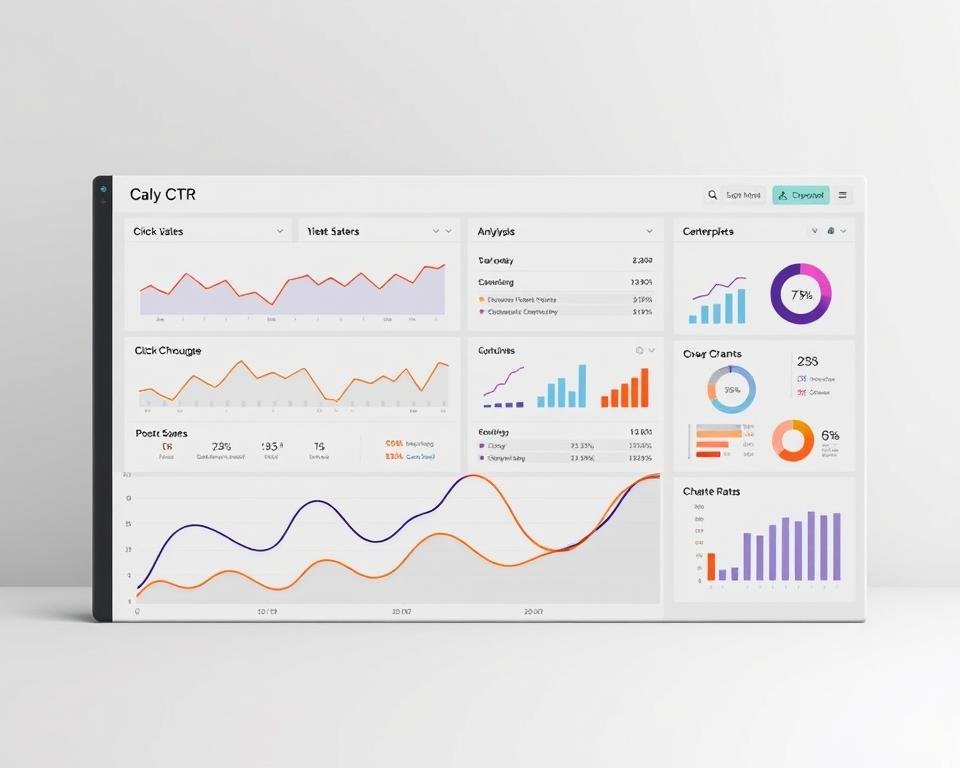I will show you how to use schema markup to get more clicks and visits to your site. Schema markup makes your website stand out in search results.
By using schema markup right, you can get more people to click on your site. It helps search engines understand your content better. This makes it easier for users to find what they need.
Key Takeaways
- Understand the basics of schema markup and its benefits.
- Learn how to implement schema markup on your website.
- Discover how schema markup can improve click-through rates.
- Explore the impact of schema markup on overall SEO performance.
- Gain insights into optimizing your website with schema markup.
Understanding Schema Markup and Its Importance
Schema markup is a key tool in SEO. It can really help your website do better. Knowing what it is, why it’s important, and its benefits is key.
What is Schema Markup?
Schema markup is a type of microdata. It gives search engines more info about your website’s content. This makes it easier for them to understand and show your content in search results.
By adding schema markup to your website, you help search engines get your content better. This can make your search engine results better.
Why It Matters for SEO
Schema markup is important for SEO because it helps search engines get your content’s details. This can make your website more visible, bring in better traffic, and get more clicks.
Improved visibility is a big reason schema markup is key for SEO. It helps your content show up in rich snippets. This can really help your website stand out.
Key Benefits of Schema Markup
Schema markup has many benefits. Some of the main ones are:
- Enhanced search results through rich snippets
- Increased click-through rates due to improved visibility
- Better search engine understanding of your content
Here’s a quick look at the main benefits of schema markup in a table:
| Benefit | Description | Impact |
|---|---|---|
| Enhanced Search Results | Rich snippets provide more context | Increased visibility |
| Increased CTR | Better understanding by search engines | More qualified traffic |
| Better Content Understanding | Clearer context for search engines | Improved indexing |
Types of Schema Markup to Consider
Schema markup is key to making your website more visible on Google. It helps search engines understand your webpage better. This can boost your site’s ranking and get more clicks.
There are many schema markup types to choose from. I’ll cover article, product, local business, and recipe schema. These are the most used ones.
Article Schema
Article schema is for news, blog posts, and more. It gives search engines info like the headline and author. Using article schema can make your content stand out in search results.
Product Schema
Product schema is for online stores. It lets you share details like price and reviews. This can help more people find your products online.
Here’s how product schema can help:
| Product Information | Without Schema | With Schema |
|---|---|---|
| Price Visibility | Limited | Enhanced |
| Review Visibility | Not Visible | Visible |
| Search Engine Understanding | Limited Context | Better Context |
Local Business Schema
Local business schema is for businesses with a specific location. It helps search engines find your business’s details. This makes it easier for locals to find you.
Recipe Schema
Recipe schema is great for food bloggers. It lets you share recipe details like ingredients and cooking time. This makes your recipes more visible and appealing.

Using different schema markup types can really help your website. Each type has its own benefits. They can make your content more visible and engaging on Google.
How to Implement Schema Markup on Your Website
I will show you how to add schema markup to your website for better SEO. This includes several important steps for successful schema markup.
Choosing the Right Schema Type
First, pick the right schema type for your site. There are many types, like article, product, and local business schema. Choose based on your site’s content and purpose.
If you have an online store, product schema is probably best. Think about your site’s main function and content type. This helps you pick the best schema for your needs.

Using Google’s Structured Data Markup Helper
Google’s Structured Data Markup Helper makes adding schema markup easy. It lets you tag your site’s elements and create the needed HTML code. Just go to the tool, pick your schema type, and follow the steps to tag your content.
This tool ensures your schema markup is correct and meets Google’s search engine needs.
Testing and Validating Your Markup
After adding schema markup, test and validate it to make sure it works. Google offers tools like the Rich Results Test and the Schema Markup Validator for this.
- Use the Rich Results Test to see if your schema markup is good for rich results.
- Check your markup with the Schema Markup Validator to find errors.
Regular testing and validation help you spot and fix problems. This keeps your schema markup working well.
Best Practices for Writing Effective Schema Markup
To get the most out of schema markup, follow best practices. This boosts your website’s click-through rates and SEO. It’s all about making your schema markup work for you.
Keep It Relevant
Make sure your schema markup fits your content. For example, use Product Schema on product pages. This makes your content easier for search engines to understand.
Relevance helps search engines show better results. It also makes your content more useful for users.

Use Proper Syntax
Getting the syntax right is key for schema markup. You need to know the right tags and attributes. Google’s Structured Data Markup Helper can help with this.
Correct syntax lets search engines understand your schema. This is important for your SEO to work well.
Regularly Update Your Schema
Schema markup needs regular updates to stay effective. Search engines change, and so do schema types. Keep your markup current and relevant.
Updating regularly keeps your schema markup strong. It also lets you adjust your strategy based on new data and changes in algorithms.
Enhancing Your Rich Snippets
To stand out in Google’s search results, it’s key to improve your rich snippets. Rich snippets give users a sneak peek of your webpage’s content. This makes them more likely to click on your link.
What Are Rich Snippets?
Rich snippets are special search results that show more info about a webpage. This includes reviews, ratings, and prices. They’re made by Google’s algorithms using the structured data markup on your site.
By adding this extra info, rich snippets help users decide which links to click. This makes your search result more relevant.

How Schema Affects Snippet Appearance
Schema markup is key in how your rich snippets look. By adding schema markup to your HTML, you tell search engines about your webpage’s content. This makes your rich snippets more informative and eye-catching.
This can make your search result stand out from others.
Examples of Effective Rich Snippets
There are many types of effective rich snippets, depending on your webpage’s content. Here are a few examples:
| Snippet Type | Description | Example |
|---|---|---|
| Product Snippet | Shows product info, like price and reviews. | A product page with a rich snippet showing a 4-star rating and a price of $19.99. |
| Recipe Snippet | Shows recipe info, like cooking time and ingredients. | A recipe page with a rich snippet showing a cooking time of 30 minutes and 4.5-star rating. |
| Review Snippet | Shows review info, like ratings and who wrote it. | A review page with a rich snippet showing a 4.5-star rating and a reviewer’s name. |
By improving your rich snippets, you can make your website more visible. This can drive more traffic and boost click-through rates.
Monitoring Your Click-Through Rates
To get the most from schema markup, watch your website’s click-through rates (CTR) closely. Learn about the tools for tracking CTR, see how they improve, and adjust based on data.
Tools for Tracking CTR
Many tools can track your website’s CTR. Google Search Console shows how your site does in search results, including CTR. Google Analytics also tracks traffic and engagement.
- Google Search Console for CTR insights
- Google Analytics for traffic and engagement
- Third-party SEO tools like Ahrefs or SEMrush
Analyzing CTR Improvements
After getting the data, look at CTR improvements. Find patterns or changes in CTR after adding schema markup. If CTR goes up, your schema markup is working well.

Making Adjustments Based on Data
After analyzing CTR, you might need to tweak your schema markup. This could mean changing the markup code, trying different schema types, or improving your keywords. Keep updating your schema based on CTR data to stay optimized for search engines.
- Review CTR data regularly
- Adjust schema markup as needed
- Test different schema types for better performance
By following these steps and always checking your CTR, you can make your schema markup better. This will help your SEO and make your website more visible.
Common Mistakes to Avoid
When using schema markup, it’s key to steer clear of common mistakes. Schema markup boosts your site’s search engine visibility. But, it must be used right to work well.
Overusing Schema Markup
One big mistake is using too much schema markup. Google warns against this. Too much can make your site’s markup messy and hard to read.
Instead, use schema markup only where it matters most. This could be for reviews, events, or business hours. This way, your most important content gets noticed by search engines.
Ignoring Google’s Guidelines
Another mistake is not following Google’s schema markup rules. Google has clear guidelines to help you use schema markup right. Not following these can make your markup invalid or even get you penalties.
To stay on track, always check Google’s guidelines and update your markup as needed. Know the right syntax, the best schema types, and how to test your markup well.

Failing to Test Markup Properly
Testing your schema markup is vital to make sure it works. Not testing can cause errors that hurt your site’s search engine ranking.
Use Google’s Structured Data Markup Helper and the Rich Results Test to check your markup. These tools spot mistakes and show how search engines see your markup. This helps you fix any issues.
Case Studies: Success Stories with Schema Markup
Schema markup has changed the game for many websites. It boosts their click-through rates and SEO. By giving search engines more info, these sites stand out in search results. This leads to more traffic and better user engagement.
E-commerce Websites
E-commerce sites have seen big wins with schema markup, like product schema. An online store for electronics used product schema. It showed reviews, prices, and availability in search results. This boosted their click-through rates by 25% and sales.

Local Service Businesses
Local service businesses, like law firms and doctors, have also seen gains. They used local business schema to share important info like hours and contact details. This made them more visible in local searches. A law firm saw a 30% jump in website visits.
Content Publishers
Content publishers, like news sites and blogs, have also benefited. They used article schema to add more info in search results, like when it was published and who wrote it. This improved their click-through rates and engagement. A news site saw a 20% rise in article views.
These stories show how schema markup can boost click-through rates and SEO for different websites. By giving search engines structured data, businesses can improve their online presence. This drives more traffic to their sites.
Future Trends in Schema Markup
Search engines are always changing. This means we need to keep up with new trends in schema markup. As tech gets better, so does how we use schema markup. Let’s look at what’s coming in schema markup and SEO.
Voice Search Optimization
Voice search is getting more popular. It’s key to make your site work well for it. Schema markup helps by giving search engines clear data. This makes your site more likely to show up in voice searches.
Key strategies for voice search optimization include:
- Use natural language in your schema markup
- Focus on long-tail keywords that sound like voice searches
- Make sure your site works well on mobiles, where many voice searches happen
The Rise of Visual Content
More people are using visual content. Schema markup can help make images, videos, and more easier to find. By using schema types like ImageObject or VideoObject, you give search engines more info about your content.
Keeping Up with Algorithm Changes
Search engine algorithms change all the time. It’s important to keep up with these changes. Update your schema markup often to follow the latest rules and best practices.
Best practices include:
- Watch official search engine blogs and guidelines
- Join SEO communities to learn about new things
- Check and update your schema markup often to make sure it’s right
Conclusion: Reap the Benefits of Schema Markup
Schema markup is a strong tool for better SEO and more clicks. We’ve looked at How to Use Schema Markup to Boost Click-Through Rates. Now, let’s go over the key points and encourage you to use it on your site.
Key Takeaways
We’ve talked about schema markup’s importance, its types, and how to use it. It makes your site more visible in search results. This brings more visitors and customers to your site.
Implementing Schema Markup
To get the most from schema markup, pick the right type for your content. Use Google’s Structured Data Markup Helper to make it easier. Also, test and check your markup to work best.
Staying Current with Best Practices
Search engine rules keep changing. It’s important to keep up with the latest schema markup and website optimization tips. Update your schema markup often and know the latest trends to stay ahead online.
